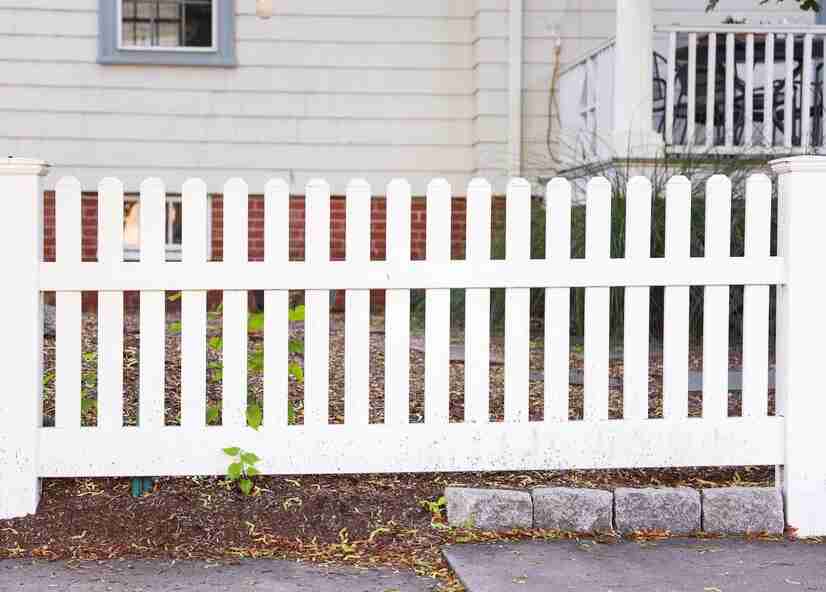
Curb appeal, often referred to as the visual attractiveness of a property from the street, plays a pivotal role in shaping the perception of a home’s value and desirability. It serves as the first impression for visitors, potential buyers, and even neighbors. While various elements contribute to curb appeal, one often underestimated aspect is the humble fence.
In this comprehensive exploration, we delve into the profound impact fences have on curb appeal. Beyond mere boundary markers, fences are versatile elements that can elevate the aesthetics, functionality, and perceived value of a property. From historical significance to modern design trends, fences have evolved to become integral components of exterior home design.
Throughout history, fences have symbolized security, status, and style. From the ornate wrought iron fences of European estates to the rustic split-rail fences of rural America, these structures have reflected cultural norms and architectural preferences. Today, fences continue to serve practical purposes while also making bold statements about homeowners’ tastes and values.
The choice of fence material, style, and design can dramatically alter the visual impact of a property. Wooden fences exude warmth and charm, while sleek metal fences convey modernity and security. The integration of living fences, such as hedges and greenery, adds a touch of natural elegance to outdoor spaces.
In this blog series, we will explore the various types of fences, their roles in enhancing curb appeal, and the factors homeowners should consider when selecting the perfect fence for their property. Through case studies, expert insights, and future trend forecasts, we aim to provide readers with a comprehensive understanding of how fences can transform not just the appearance, but also the value, of their homes. Join us on this journey as we unlock the potential of fences in enhancing curb appeal.
Historical Perspective Of Fences
Fences have a rich historical background that dates back centuries, evolving from simple barriers to complex structures that serve various purposes beyond mere delineation of property lines. Understanding the historical perspective of fences provides insight into their cultural significance, architectural evolution, and societal functions.
Throughout history, fences have been integral to human settlements, serving as a means of protection, demarcation, and control. In ancient civilizations such as Mesopotamia, Egypt, and China, fences were constructed primarily for agricultural purposes, enclosing fields and livestock to safeguard them from wildlife and theft. These early fences were often made from natural materials like wood, stone, or thorny bushes, reflecting the resourcefulness and practicality of early human societies.
As civilizations advanced, so did the sophistication of fence construction. In medieval Europe, for example, the feudal system led to the widespread use of fences to delineate land ownership and establish boundaries between manors and villages. The iconic stone walls and hedges of English countryside estates not only served as barriers but also symbolized social status and prestige.
During the colonial era, fences played a crucial role in the settlement and expansion of territories. Across the Americas, settlers erected fences to stake claims to land, protect crops from livestock, and establish borders between neighboring properties. The iconic split-rail fences of early American homesteads are enduring symbols of this period, representing the pioneering spirit and resilience of early settlers.
As industrialization and urbanization transformed landscapes, fences adapted to meet the changing needs of society. In the 19th and 20th centuries, fences became more standardized and mass-produced, reflecting advancements in manufacturing and materials. Chain-link fences, for example, gained popularity for their affordability and durability, becoming ubiquitous in urban and suburban settings.
In summary, the historical perspective of fences reveals their evolution from rudimentary barriers to multifaceted structures that reflect cultural, social, and technological developments. Understanding this evolution enhances our appreciation for fences as not only practical utilities but also enduring symbols of human civilization’s ingenuity and adaptability.
The Role Of Fences In Curb Appeal
The role of fences in curb appeal is multifaceted, encompassing both practical and aesthetic considerations. Here’s a breakdown of the key roles fences play in enhancing the curb appeal of a property:
- Visual Enhancement: Fences are prominent features of a property’s exterior, and their design can significantly impact its overall aesthetic appeal. Well-designed fences complement the architectural style of the home, adding character and charm to the landscape. Whether it’s a classic picket fence, a sleek modern design, or a rustic wooden fence, the right choice can elevate the visual appeal of the property and create a welcoming first impression.
- Privacy and Security: Fences provide a sense of privacy and security, which are essential elements of a comfortable and functional outdoor space. By defining property boundaries and creating barriers to entry, fences help homeowners feel secure in their surroundings. This sense of privacy and security enhances the overall attractiveness of the property, making it more appealing to potential buyers and visitors alike.
- Boundary Definition: Fences serve a practical function by clearly delineating property lines and defining outdoor living spaces. They create a sense of separation between neighboring properties, reducing conflicts and disputes over boundaries. A well-defined property boundary contributes to a neat and organized appearance, enhancing the overall curb appeal of the property.
- Landscape Integration: Fences can be integrated into the landscape design to create a harmonious outdoor environment. By incorporating elements such as climbing plants, flowers, and decorative lighting, fences can become focal points of the landscape, adding visual interest and depth to the property. Thoughtful landscaping around fences can soften their appearance, blending them seamlessly into the surrounding environment and enhancing curb appeal.
In summary, fences play a crucial role in enhancing curb appeal by providing visual enhancement, privacy, security, boundary definition, and integration into the landscape. When chosen and designed thoughtfully, fences can significantly contribute to the overall attractiveness and value of a property, making them an important consideration for homeowners looking to improve their outdoor spaces.

Types Of Fences And Their Impact
- Wooden Fences:
- Impact: Wooden fences are versatile and offer a classic, rustic charm to any property. They provide privacy, security, and can enhance the aesthetic appeal of a home.
- Durability: Depending on the type of wood and maintenance, wooden fences can have varying degrees of durability. Cedar and redwood are naturally resistant to decay and insects, while pressure-treated wood offers improved longevity.
- Maintenance: Wooden fences require regular maintenance, including staining, painting, or sealing to protect against weathering, rot, and pests.
- Metal Fences:
- Impact: Metal fences, such as wrought iron, aluminum, or steel, exude elegance and sophistication. They offer security while allowing for visibility and airflow, making them suitable for both residential and commercial properties.
- Durability: Metal fences are highly durable and resistant to weathering, rot, and pests. Wrought iron fences, in particular, are known for their longevity and timeless appeal.
- Maintenance: Metal fences typically require minimal maintenance, with occasional cleaning and repainting to prevent rust and corrosion.
- Vinyl Fences:
- Impact: Vinyl fences are low-maintenance alternatives to traditional wood or metal fences. They come in a variety of styles and colors, offering privacy, security, and aesthetic appeal to any property.
- Durability: Vinyl fences are highly durable, resistant to rot, decay, and pests. They are also immune to rust and corrosion, making them ideal for humid or coastal environments.
- Maintenance: Vinyl fences require minimal maintenance, usually limited to occasional cleaning with soap and water to remove dirt and debris.
- Masonry Fences:
- Impact: Masonry fences, such as brick or stone walls, are synonymous with luxury and prestige. They provide unparalleled durability, privacy, and security, adding value and curb appeal to high-end properties.
- Durability: Masonry fences are incredibly durable and can withstand harsh weather conditions, impact, and fire. They require little to no maintenance and can last for generations.
- Cost: Masonry fences tend to be more expensive than other types of fencing due to material and labor costs. However, their longevity and timeless appeal justify the investment for many homeowners.
- Living Fences (Hedges and Greenery):
- Impact: Living fences made of hedges, shrubs, or greenery offer a natural and eco-friendly alternative to traditional fencing. They provide privacy, noise reduction, and wildlife habitat while enhancing the beauty of the landscape.
- Maintenance: Living fences require regular pruning, watering, and fertilizing to maintain their shape, density, and health. However, they offer the flexibility to create custom designs and adapt to changing environmental conditions.
Factors Influencing Fence Selection
The selection of the right fence involves considering various factors to ensure it meets both functional and aesthetic needs. Here are several key factors influencing fence selection:
- Purpose: Determine the primary purpose of the fence. Is it for security, privacy, aesthetics, containment of pets or children, or simply to mark property boundaries? The intended function will greatly influence the type and design of the fence chosen.
- Architectural Style: Consider the architectural style of your home and surrounding properties. The fence should complement the overall aesthetic to enhance curb appeal. For example, a modern home may pair well with a sleek metal fence, while a traditional home might suit a classic picket fence.
- Neighborhood Aesthetics: Take into account the style and materials of fences in your neighborhood. While you want your fence to stand out, it should also harmonize with the surrounding environment to maintain neighborhood aesthetics and property values.
- Budget: Set a budget for your fencing project. Different materials and designs come with varying costs, including installation and long-term maintenance. Balancing quality and affordability is essential to ensure a successful investment.
- Maintenance Requirements: Consider the level of maintenance you’re willing to commit to. Some materials, like wood, may require regular staining or painting, while others, such as vinyl or metal, are more low-maintenance. Factor in time and costs associated with upkeep when selecting your fence material.
- Durability and Longevity: Assess the durability and longevity of different fence materials in relation to your climate and environmental factors. For example, metal fences are durable but may rust in humid climates, while vinyl fences are resistant to moisture and insects.
- Privacy and Security Needs: Evaluate your privacy and security needs. Solid fences like vinyl panels or masonry walls offer maximum privacy and security, while chain-link or ornamental fences provide visibility with varying degrees of security.
- Local Regulations and HOA Guidelines: Check local regulations, zoning ordinances, and homeowner association (HOA) guidelines regarding fence height, material, and design restrictions. Ensure compliance with these regulations to avoid potential fines or disputes.
- Landscaping Integration: Consider how the fence will integrate with your landscaping. Will it obstruct or enhance views? Will it accommodate climbing plants or shrubs? Choose a fence design that complements your landscaping and enhances the overall aesthetic of your outdoor space.
By carefully considering these factors, you can make an informed decision when selecting a fence that meets your practical needs, complements your home’s style, and enhances your outdoor living space.
In conclusion, the impact of fences on curb appeal is undeniable, serving as more than just physical barriers but also as elements that enhance the beauty, security, and functionality of outdoor spaces. Through this comprehensive exploration, we’ve uncovered the historical significance, various types, and critical factors influencing fence selection. Whether it’s defining property boundaries, providing privacy, or adding aesthetic charm, the right fence can transform a property’s curb appeal and elevate its overall value. By understanding the role fences play and carefully considering the factors discussed, homeowners can make informed decisions to create inviting and visually appealing outdoor environments.


